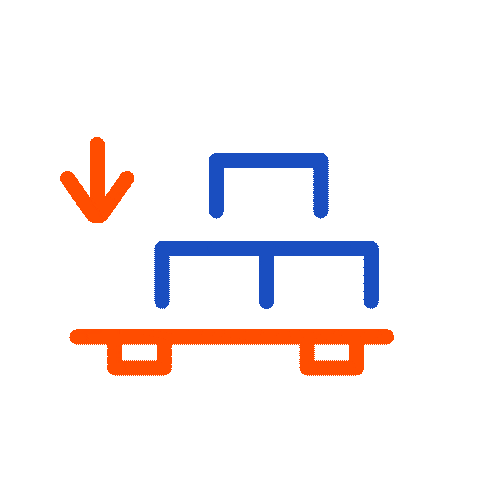
Container Shipping to Philippines — Get Instant Quotes



Why Choose iContainers for Shipping to the Philippines?
- High-capacity gateway. Manila’s International Container Terminal (MICT) handled a record 275 028 TEU in a single month in late 2024, helping push national throughput beyond 9 million TEU a year—so space and sailings stay plentiful. http://ppa.com.ph, WorldCargo News, CEIC Data
- Multiple port options. Besides Manila South Harbour and MICT, key alternatives include Subic Bay, Cebu, Batangas, and Davao, giving you routing flexibility when Manila is congested.
- Local expertise, digital convenience. Book, upload docs, and track milestones in one dashboard while our Manila team handles customs and last-mile drayage.
Our Container Shipping Services to the Philippines
Full Container Load (FCL)
Most inbound cargo—consumer electronics, industrial machinery, garments—moves in 20 ft or 40 ft boxes direct to Manila. Electronics alone made up ≈ US $ 27 billion (21 % of 2024 imports). Trading Economics, psa.gov.ph
Typical FCL transit times
- Shanghai → Manila: 18 – 20 days
- Los Angeles → Manila: 23 – 25 days
- Rotterdam → Manila: 36 – 39 days
Less-than-Container Load (LCL)
SMEs increasingly choose LCL as e-commerce grows across the archipelago; Asia-Pacific LCL volumes are forecast to rise 5 % CAGR through 2033 (Market Report Analytics). Weekly console boxes depart Antwerp, Singapore, and Los Angeles—ideal for shipments under ~15 m³ of spare parts, specialty foods, or fashion items.
Air Freight — The Fast Alternative
When you need cargo in days, not weeks, we route via Ninoy Aquino International Airport (MNL), which moved 159 300 t of air cargo in Q1 2025 (-- 15.6 % YoY growth). Door-to-door from EU/US hubs takes ≈ 5 – 9 days. PortCalls Asia
Lane insights: Most Philippine importers still favors FCL for high-value electronics, but LCL demand spikes ahead of holiday peaks when importers top up stock without over-ordering.
Country-specific challenges: The Western Pacific typhoon season (Jun–Nov) can force port closures and delay feeder schedules—build a 3-5 day buffer or route via Subic/Cebu during heavy-weather advisories. Eco-Business
Container shipping rates to Philippines
How much does it cost to ship a container to Philippines?
How Long Does It Take to Ship a Container to the Philippines?*
| Origin | Mode | Est. Transit Time | Notes |
|---|---|---|---|
| Shanghai, CN | FCL | 18 – 20 days | Direct Far-East loop |
| Los Angeles, US | FCL | 23 – 25 days | Daily sailings via Long Beach |
| Rotterdam, NL | FCL | 36 – 39 days | Weekly departures |
| Antwerp, BE | LCL | 30 – 40 days | Weekly console boxes |
| Frankfurt → MNL | Air | 5 – 9 days | Includes clearance |
*Port-to-port unless noted; customs, inland haulage, and weather can add extra days.
Main Philippine Ports & Terminals
| Port | 2024 Throughput / Capacity | Cargo Focus | Highlights |
|---|---|---|---|
| MICT (Manila) | Record 275 k TEU in Oct 2024 | General & reefer | 77 % yard utilisation, 26 moves/hr |
| Manila South Harbour | Part of 75 % share of national imports handled by Manila twins | Consumer goods | Deep-water berths |
| Subic Bay | Free-trade hub, expanding Japan route | Autos, project cargo | Gov’t Manila-Subic-Osaka corridor |
| Cebu | ≈ 820 k TEU (2024) | Mixed RoRo & containers | New NCICP port under build-out |
| Davao | Regional gateway for Mindanao | Bananas, agri-commodities | Deep-sea quay, reefer racks |
Typical Commodities Shipped to the Philippines
- Electronics & components (21 % of imports) for domestic assembly plants.
- Heavy machinery & parts supporting infrastructure and mining.
- Garments & textiles feeding the export apparel sector.
- Foodstuffs & beverages for a 115-million-strong consumer market. psa.gov.ph
FAQs About Shipping Containers to Philippines
Yes—below ~15 m³, LCL generally beats paying for a full 20 ft container.
Major ports occasionally suspend operations for 24-48 h. Booking buffer days or choosing Subic/Cebu as alternates mitigates risk. Eco-Business
Importers often prefer CIF Manila; exporters wanting cost control choose FOB origin port.
Not legally, but strongly advised given weather-related risks.